Esteban Jefferson’s tableaux of murder, protest and power
5 min read
In his first UK institutional show, Esteban Jefferson captures significant moments of power and societal shifts in America
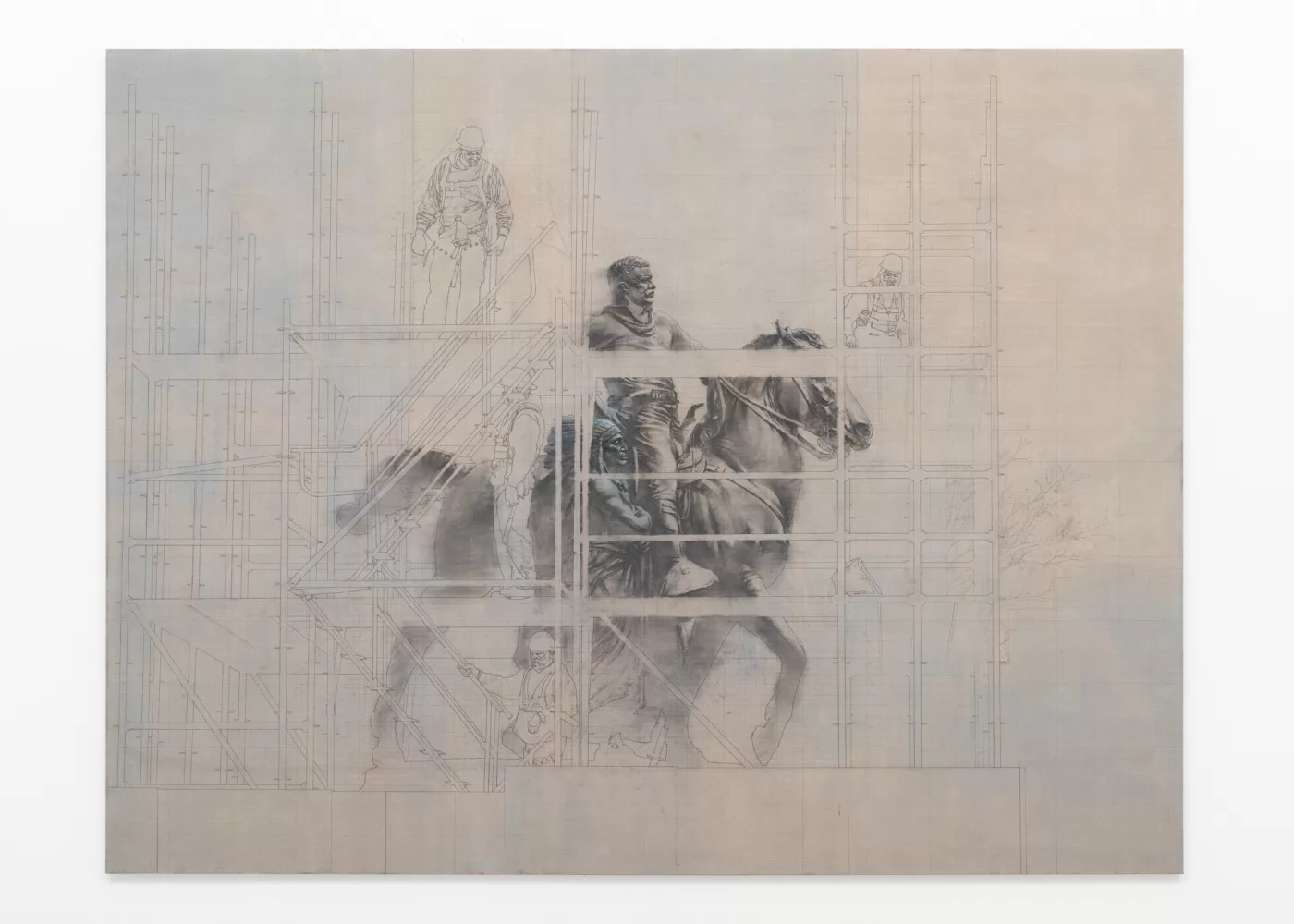
Esteban Jefferson, December 2, 2022 (2022), Oil on graphite on linen. Photography: Justin Craun
Esteban Jefferson’s ‘May 25th, 2020’ at Goldsmiths CCA—the New York-based artist’s first UK institutional exhibition—offers visitors a visual narrative in three acts. Taking as its inflection point the murder of George Floyd in May 2020, a series of large-scale works capture what senior curator Natasha Hoare calls “fugitive moments” of power trickling up—the immediacy of a graffitied Dior storefront in New York in the days after the murder; the splattering with red paint and eventual removal of a statue of Theodore Roosevelt in Manhattan a year and a half on, in which the former president is positioned above a Native American figure; the quotidian aftershocks of the event, captured through a deli window covered in a 1968 image of Gloria Richardson pushing aside a soldier’s bayonet. Commemoration and amnesia collide; Jefferson inverts the notion of American exceptionalism by calling into question the legitimacy of official history, through the lens of an American tragedy that hastened this history’s long overdue indictment.
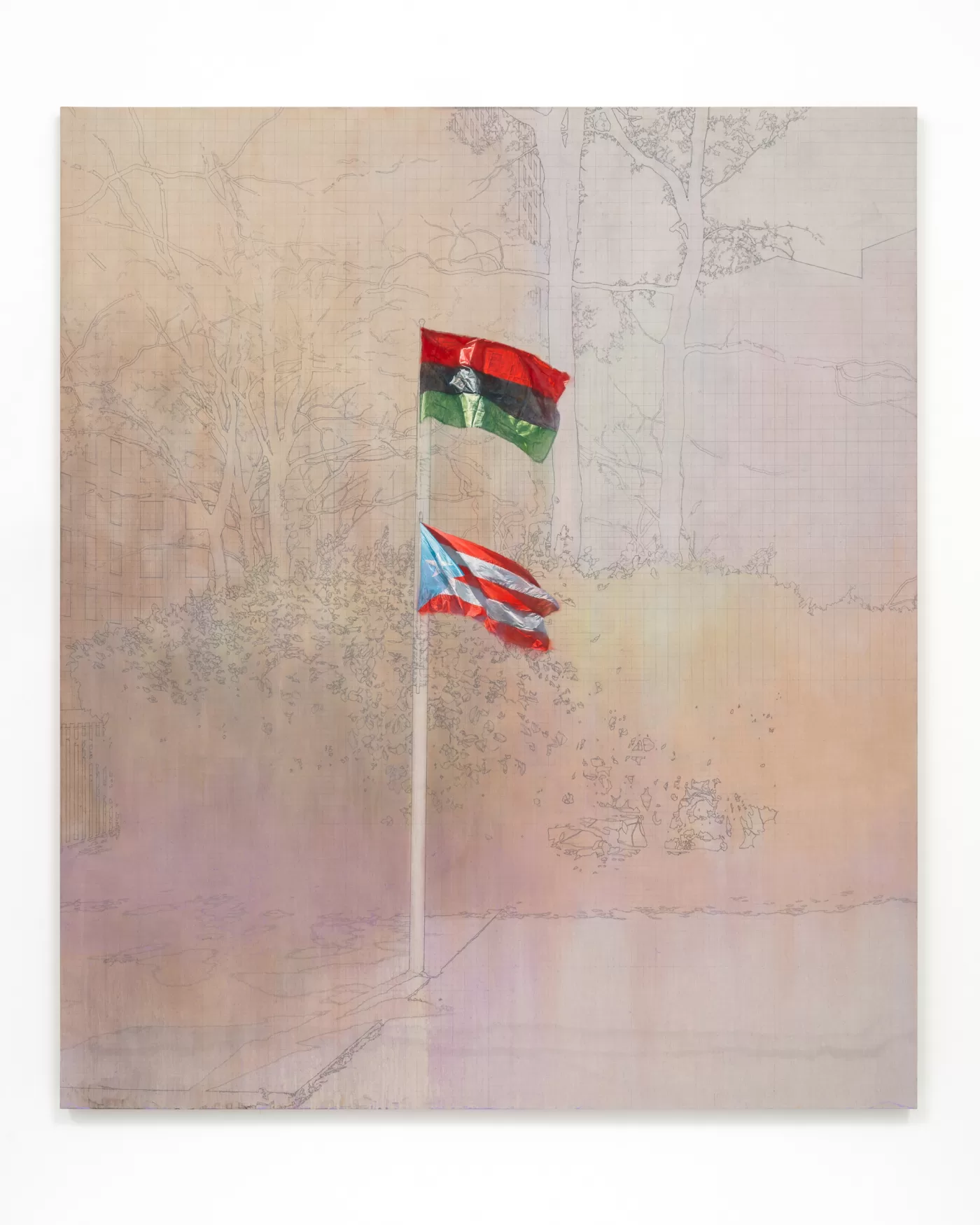
Esteban Jefferson, August 29, 2017 (2022). Oil and graphite on linen. Photography: Justin Craun
Jefferson’s technique, drawing from the methods of sign-makers and architects, relies on rendering images from photos that he has taken onto sketched grids that precisely contain each pixel. (A diptych of a police van is time-stamped 29/5/2020, underlining the work’s photographic origins.) Some works are symbolically evocative rather than visual manifestations of captured moments: A June 2021 Zoom recording of a meeting held by the Landmarks Preservation Commission in New York, in which speakers debate the removal of the Roosevelt statue; a reproduction of the bronze plaque that was placed when the statue was eventually taken down, jarringly placed next to an empty wall.
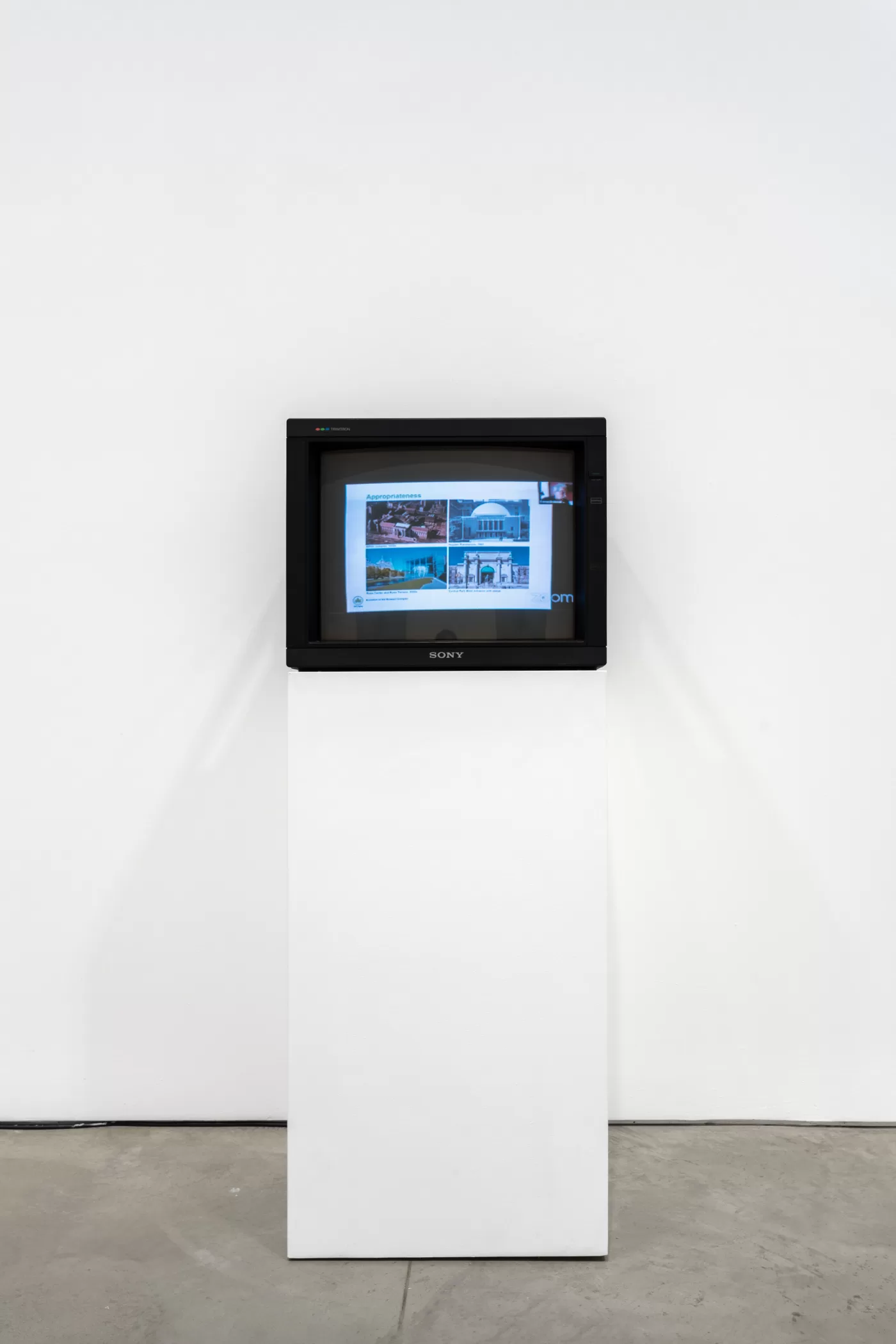
Esteban Jefferson, June 15, 2021 (2023), Single channel video (colour, sound), 12:36 minutes. Photography: Justin Craun
Jefferson’s earlier works provide the aesthetic and metaphorical threads that weave throughout this show. A previous series, Petit Palais (2019-2021), contended with the invisibility of a pair of Venetian busts of unnamed Black subjects displayed behind the reception desk of the Petit Palais Fine Arts museum in Paris, in which the busts are finally elevated through highly-wrought details, set against the lightly-sketched backdrop of the museum. “I like the idea of refusing to paint in everything and only focusing on the part that deserves labour,” Jefferson told the journalist Precious Adesina in a 2021 interview. The New York police van that Jefferson photographed four days after Floyd’s murder is rendered almost as a sketched frame for the protesters’ graffiti in red (FTP), while the police department’s motto, ‘Courtesy, Professionalism, Respect,’ appears ironically on one side of the vehicle, flanked by a triumphant ‘OINK!’ and ‘ACAB.’ And yet the car’s headlights glow orange; the sinister threat of further violence inflicted by the police and the state is never far away.
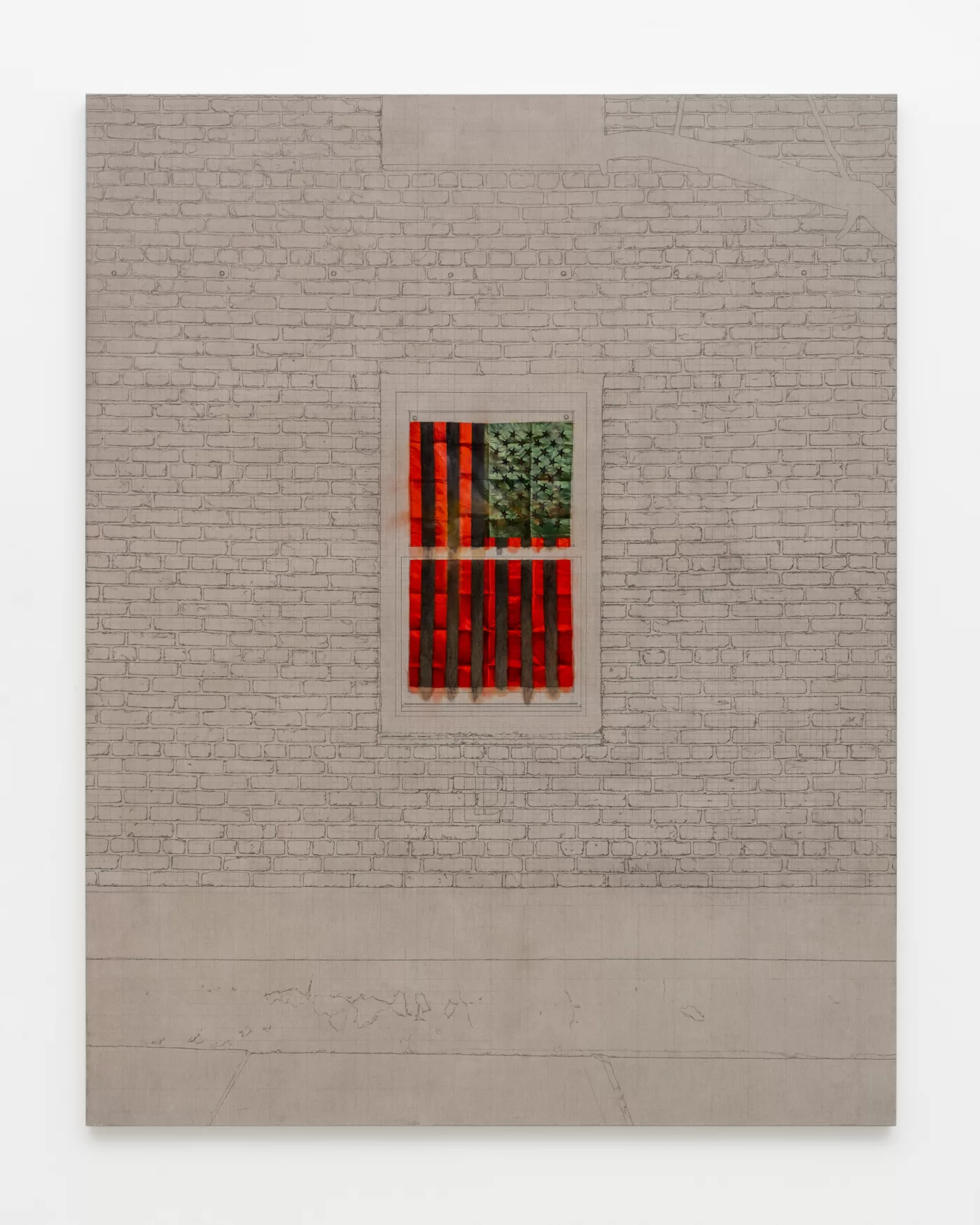
Esteban Jefferson, June 7, 2020 (2022), Oil and graphite on linen. Photography: Justin Craun
Elsewhere, what is intentionally obscured is preeminent. A George Washington statue at the Continental Army Plaza in Brooklyn—a visual fixture on Jefferson’s daily commute—is depicted on two occasions, years apart: in November 2020, decorated with extensive graffiti, a pair of Nike sneakers hanging from the horse’s reins atop which Washington sits, orange traffic cones strewn around; and in April 2023, most of the graffiti hidden by white paint, save for a ‘Black Lives Matter’ that appears, phantom-like, beneath a thin, translucent layer of the cover-up. It is almost as though Jefferson, who once remarked that he sees himself more as a documentarian than a commentator, is telling us that absences—the vanquished and the unnamed, a plaque beside an empty wall, the messages that have been papered over—have a way of bursting through the seams of the sanctioned narratives that sought to erase them.
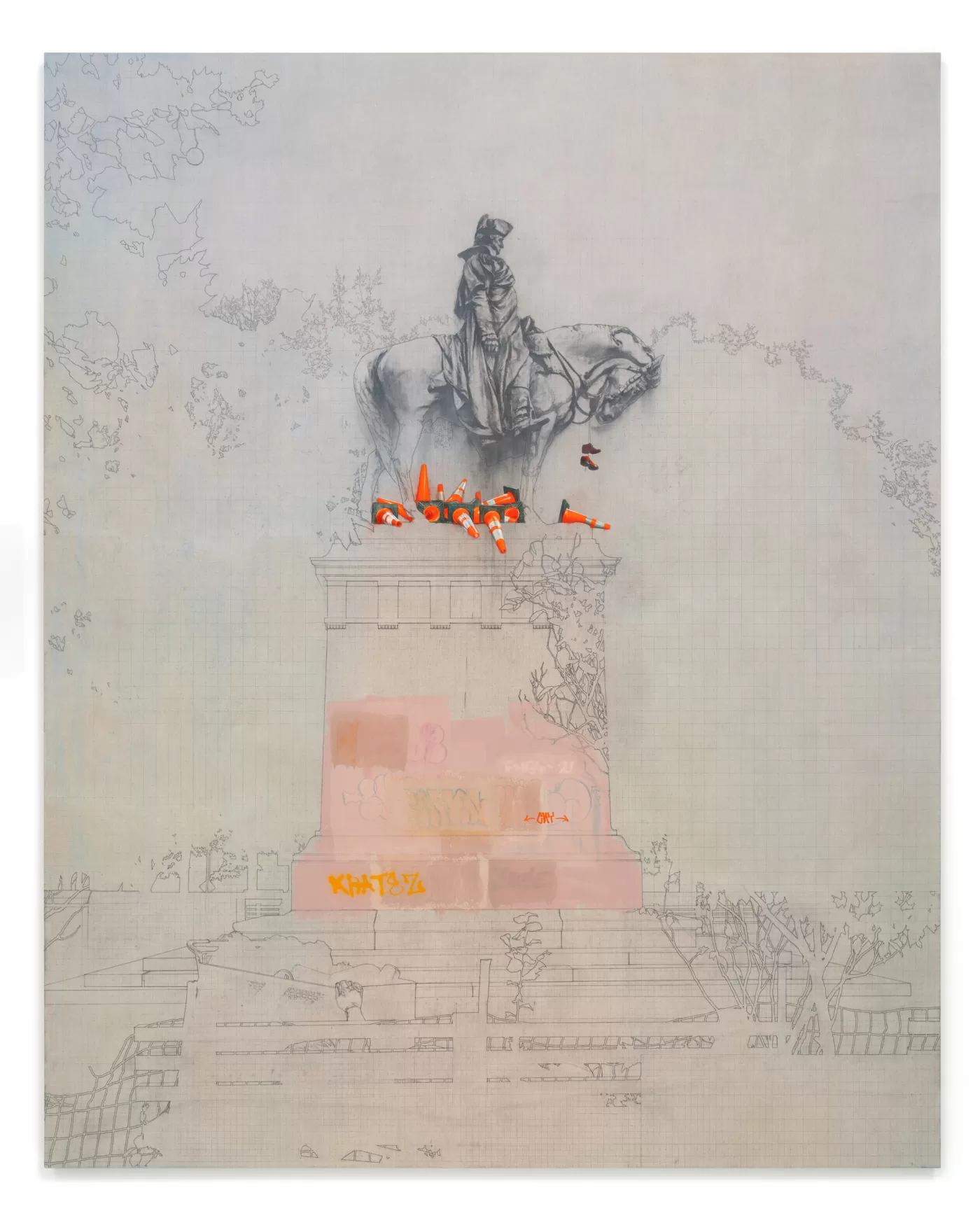
Esteban Jefferson, September 17, 2021 (2022), Oil and graphite on linen. Photography: Justin Craun
Esteban Jefferson, ‘May 25th, 2020’ is on display at Goldsmiths CCA until 14th January, 2024